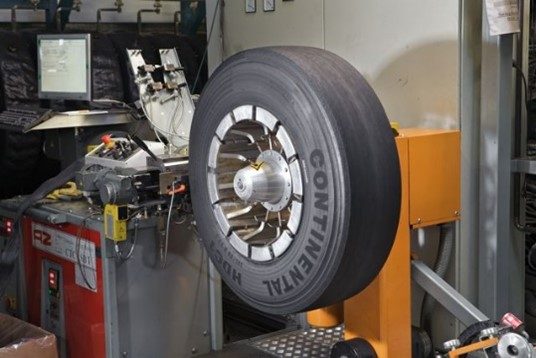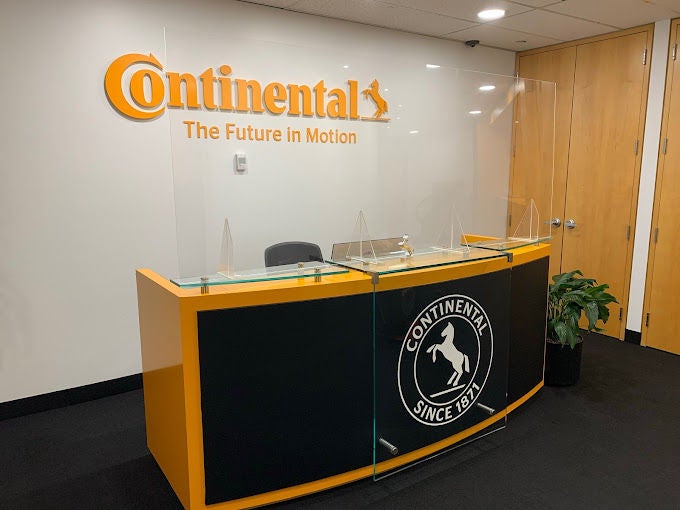Retread Tires Contribute to Continental’s Sustainability Targets.
- Retreading contributes to the productive life cycle of a tire using fewer materials
- Less energy is required to build a retread tire
- Conti Urban, an urban concept tire, will be retreadable

Mississauga, ON., Dec. 6, 2022 — Tire quality is an essential part of road safety. When tire tread depth has worn and is no longer adequate for safe transportation, retreading can be performed reusing quality tire casings. Retreads offer excellent fleet mobility solutions that can lead to both cost savings and environmental benefits. With good quality tires capable of being retreaded several times, the total cost of the tire asset over the long run is a benefit for the fleet.
“Retread is a key part of Continental’s strategy in the market and our commitment to retreading also provides sustainability improvements, in line with the company’s Vision 2030,” said Renato Sarzano, senior vice president Truck Tires Americas, Continental Tire the Americas LLC. “We continue to expand our retread portfolio and the ContiLifeCycle retread network continues to serve our fleet customers.”
The ContiLifeCycle approach offers a three-stage, cradle-to-grave approach which includes new tires, casing reuse, and retreading. The third step in the ContiLifeCycle involves retreading truck and bus tires. This premium, quality solution is cost-effective, eco-friendly, and prolongs the life of Continental truck and bus tires. Offering proven performance and reliability, the retreaded tire “looks like new, runs like new” while providing the high operational efficiency and lowest overall driving cost. In fact, Continental Truck tires are engineered for retreading, with several characteristics that will improve carcass lifetime in order to receive multiple retreads before end of life.
Conti Urban concept tire designed for great sustainability in urban transport
Continental’s sustainable concept tire – Conti Urban, which made its world premiere at the IAA Transportation 2022 – is designed for delivery vehicles in urban environments and electrified city buses. The tread of the Conti Urban, the part of the tire that is in contact with the road, contains 68 percent renewable materials, including rapeseed oil, silica obtained from the ash of rice husks and responsibly sourced natural rubber. Like the majority of Continental’s commercial vehicle tires, the Conti Urban will be retreadable.
Each retreaded tire helps to protect the environment. Reusing the casing saves energy and raw materials. Multiple use of the casing also reduces the number of old tires in circulation. Continental’s cradle-to-grave approach cares for the Earth and operating costs.
Retreading contributes to sustainability efforts
Retreading contributes to the productive life of a tire. By utilizing the original or a used quality casing, a retread can eliminate millions of scrap tires being sent to landfills each year. Additionally, it takes much less energy to produce a retread compared to the production of a new tire. According to the Tire Retread & Repair Information Bureau (TRIB), it takes approximately 22 gallons of oil to manufacture a new medium truck tire, but it takes only seven gallons for a retread. Most of the oil is found in the casing, which is reused in the retreading process. As a result, it takes approximately 7 gallons of oil to produce a retread. This saves hundreds of millions of gallons of oil. And because less energy is used to produce a retread tire, carbon emissions and greenhouse gas is reduced from the air we breathe. Everyone can benefit from retread use.
According to the data collected by CATRA (Canadian Association of Tire Recycling Agencies), approximately 19,246 tons of tires were scrapped in 2021 throughout Canada and compared to new tires, retreaded tires:
- Use 15 gallons less oil and 90 pounds less total material per tire,
- Save the U.S. and Canada about 215 million gallons of oil per year,
- Reduce CO2 emissions by 24 percent,
- Reduce water consumption by 19 percent,
- Reduce air pollution by 21 percent, and
- Remove 1.4 billion pounds per year from the waste stream.
According to the U.S. EPA, with which Canada works collaboratively as per the Environmental Cooperation Agreement (ECA), retread tires contain up to 75% post-consumer recycled material. Almost 40 pounds of raw material is saved in every retreaded tire, including rubber, steel, and carbon black.
Retreading conserves oil. Retreading truck tires in the U.S. reduces carbon emissions by 396,000 tons annually. The retreading process generates 70 percent less emissions than production of a new tire.
To further the contribution to sustainability, it is important that the actual retreading facilities be close to the customer base, so logistics costs do not skew the cost benefit.
Contact

Continental Tire Canada
1 Robert Speck pkwy Suite 900
Mississauga, Ontario
L4Z 3M3
Phone: 1-855-453-1962
Email: Canada.Marketing@conti-na.com
